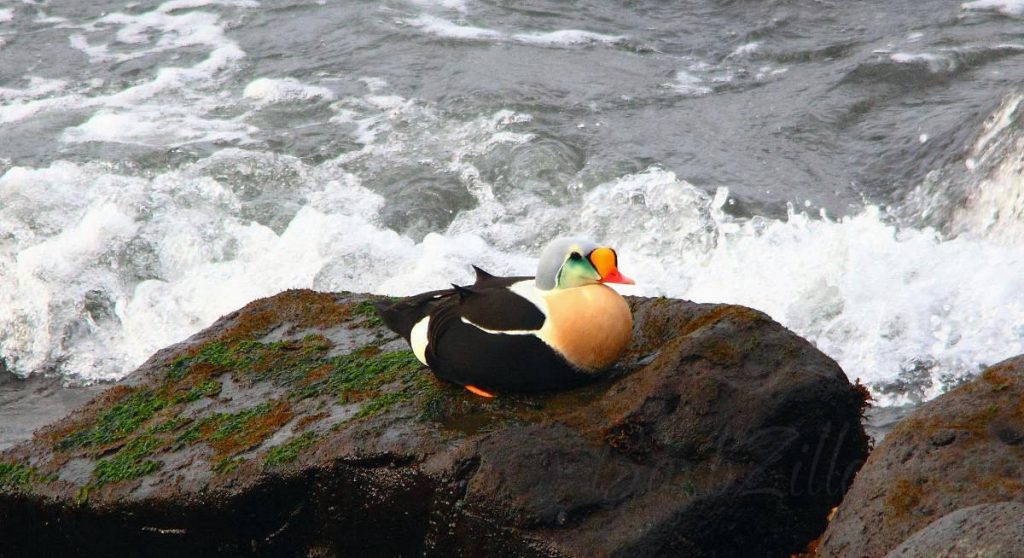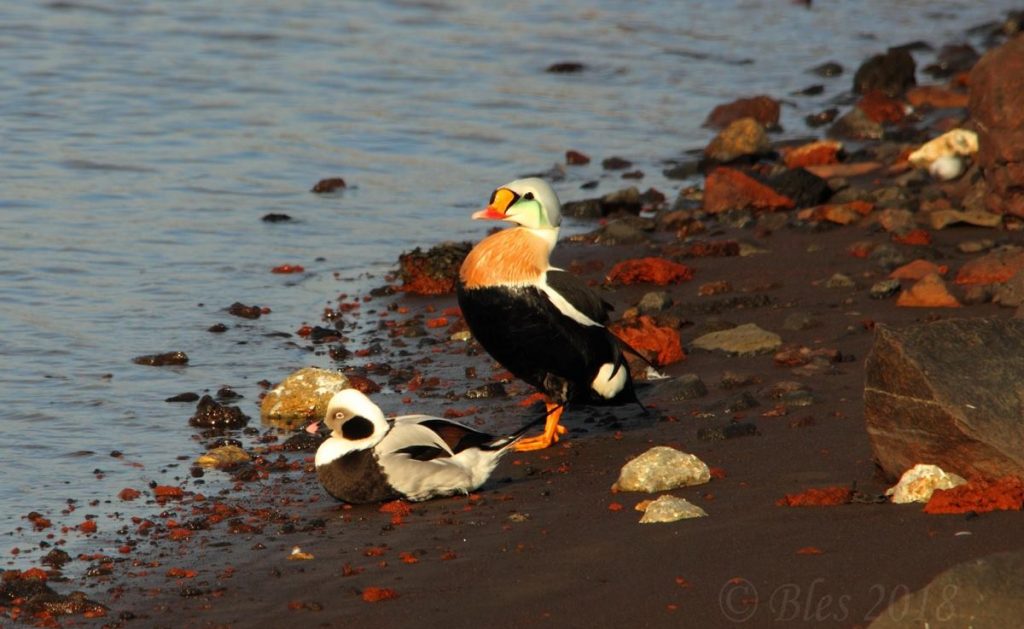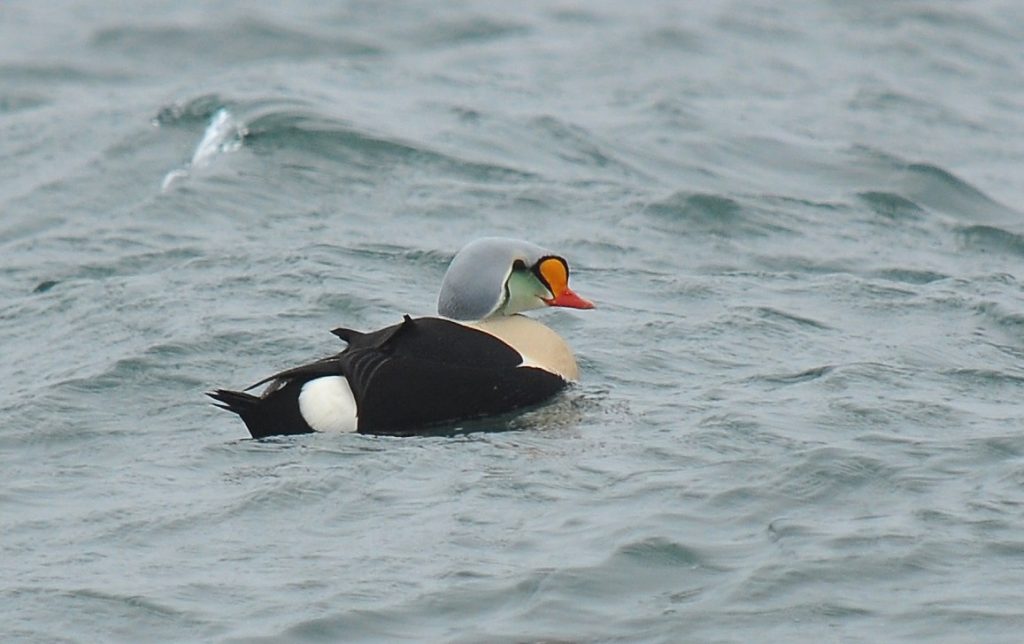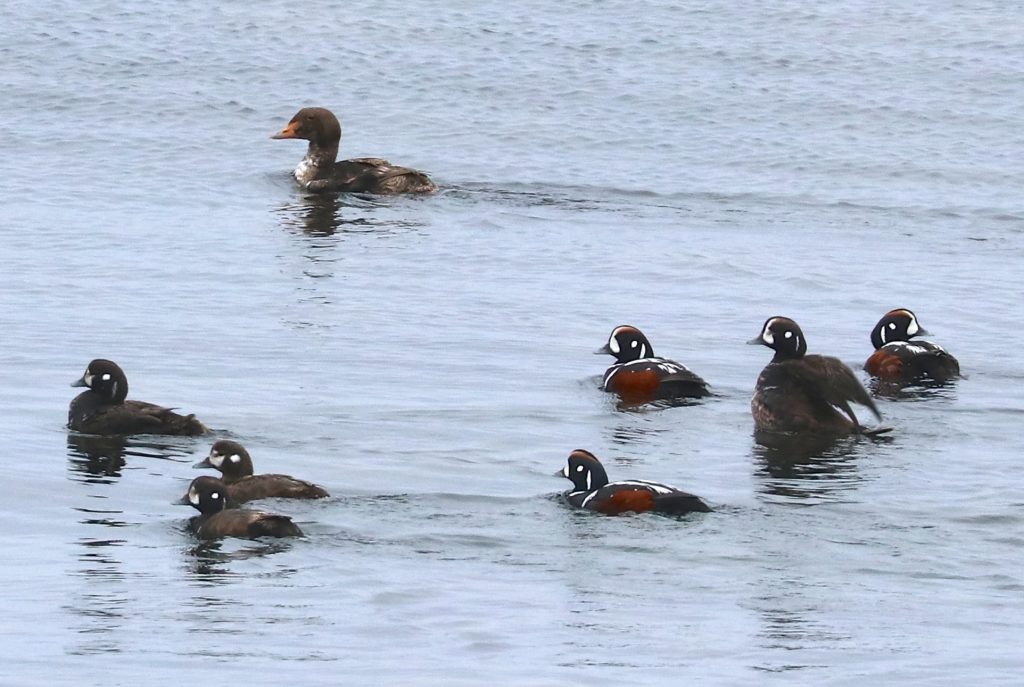This is essentially a resident non-breeding species in the Pribilofs, with a poorly defined seasonality due to omnipresent non-breeders that are typically present year-round. It is an abundant winter resident in near shore and offshore waters with birds lingering late into the spring and typically into and through the summer months in small numbers. Large numbers (1000+) may still be present in early May depending on sea ice conditions, though these groups are rarely present far into the month and decline steadily through May and into June with the last small flocks (less than 50 birds) usually gone by June 10th. Only small groups or singles, with counts usually in the single digits, after June 15th typically over-summer locally with summer arrivals occurring rarely; birds have been present during the summer in every year except one since 1994. Fall migrants typically begin to re-appear in small numbers by late August with slowly building numbers in September and October, normally only reaching 50- 100 birds on St. Paul Island by mid-October. Large numbers move in sometime during November-January as winter sets in and the Bering Sea ice pack pushes south. On sheer numbers, this is often the most common bird species present in the Pribilofs during much of winter.




